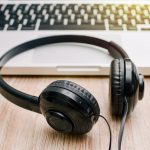All School District schools and administrative offices will be CLOSED on Friday, July 4th, in observance of the holiday.
Your voice matters! Attend a virtual or in-person session to share your thoughts on school facilities. ➔ Find a session near you

In fall 2020, all SDP students in grades K-12 attended school virtually due to the Covid-19 pandemic, and students in grades K-5 took the within-year aimswebPlus Reading and Math assessments while students in grades 6-12 took the within-year Star Reading and Math assessments. In fall 2021, students returned to school in person, and all grades K-12 took the within-year Star Reading and Math assessments. Star includes an additional performance group, and the process of categorizing students into performance groups differs between aimswebPlus and Star. This set of reports compares student participation and performance on the within-year assessments in fall 2020 and fall 2021 given this context.

From 2014-15 through 2020-21, the School District of Philadelphia (SDP) assessed literacy proficiency for K-5 students using aimsweb and aimswebPlus, universal early literacy screening, benchmarking, and progress-monitoring tools from Pearson. This report uses both a cohort analysis and a cross-sectional analysis of aimsweb results to examine the literacy performance from 2014-15 to 2018-19 of three kindergarten cohorts.

The report is an expansion of a prior report’s discussion of PSSA and aimswebPlus data. The analysis in this report looks more deeply at the differing trajectories of aimswebPlus performance by fall 2015-16 kindergarten aimswebPlus performance group, with comparisons between students who performed in the different spring 2018-19 third grade ELA PSSA performance groups.

This brief describes which District-wide tests, among those regularly administered by the Office of Assessment each year, were administered during the mostly virtual 2020-21 school year. For those tests that were administered, details on about student participation are provided.

The School District of Philadelphia implemented a universal K-12 interim assessments program beginning in the 2020-21 school year. All schools across the District administered aimswebPlus for grades K-5 and Star for grades 6-12; reading and math tests were administered for both assessments. The overall goals of this analysis were: (1) to examine whether there are patterns of nonparticipation during the spring assessment window that can provide additional information when interpreting 2020-21 performance and (2) to discover whether there are ways to support increased participation in the 2021-22 testing windows.

This report examines the reading performance of the 2015-16 kindergarten student cohort over time, including how student performance on the aimswebPlus assessment changed between kindergarten (2015-16) and third grade (2018-19), how student performance on the aimswebPlus assessment change between kindergarten and third grade by demographic characteristics, and how student performance on the aimswebPlus assessment changed between kindergarten and third grade grouped by third grade ELA PSSA performance.

These four slide decks provide a District-level overview of K-12 student participation and performance on the aimswebPlus and Star math and literacy assessments. During the 2020-21 school year, aimswebPlus was administered 3 times (fall, winter, and spring) in grades K-5 and Star was administered 4 times in grades 6-8 and 3 times in grades 9-12.

This series of reports compares performance in reading and math assessments for the same set of students over time. The main metric used in the reports is the National Percentile Rank (NPR). NPR is a norm-referenced measure that compares student performance to a national sample of students.

The District uses aimswebPlus assessments to monitor K-3 math progress on the Leading Indicators. This brief explores two research questions to better understand K-3 aimswebPlus student performance

We use aimswebPlus, a universal screening, benchmarking, and progress-monitoring tool from Pearson, to assess literacy and math proficiency in grades K-5. These assessments help identify students who are meeting grade- and term-level benchmarks as well as those who may need additional support. This post explains aimswebPlus administration and scoring, as well as how we use the data.